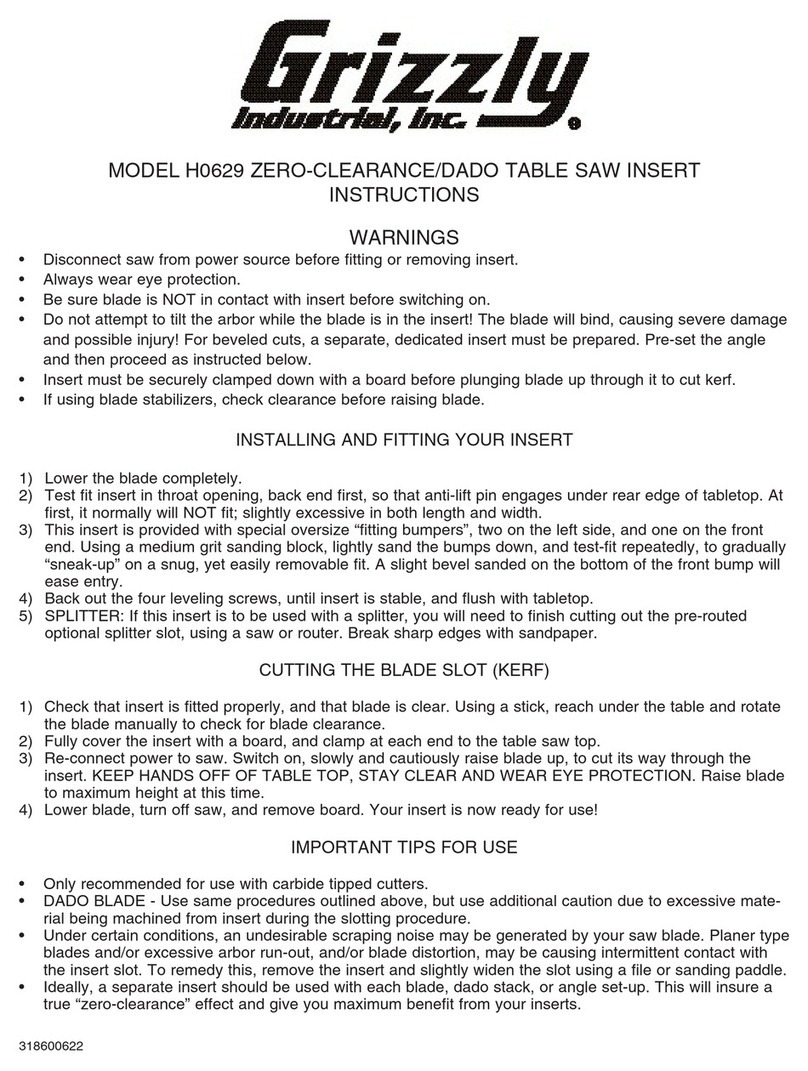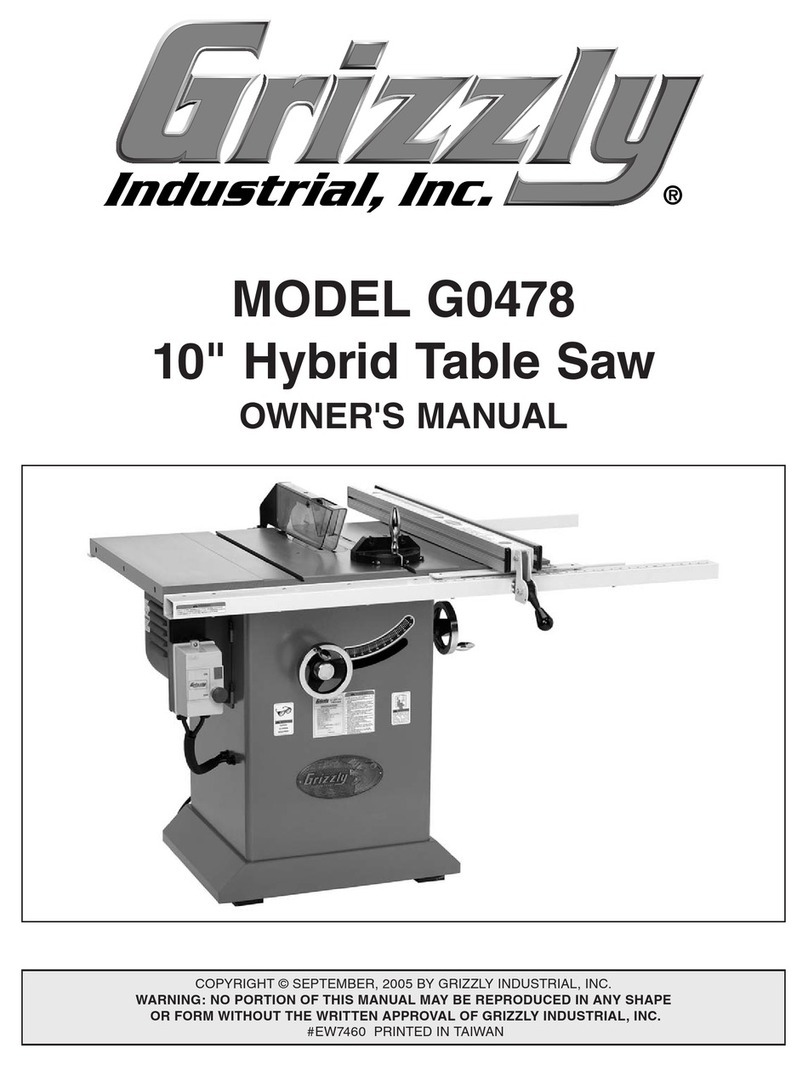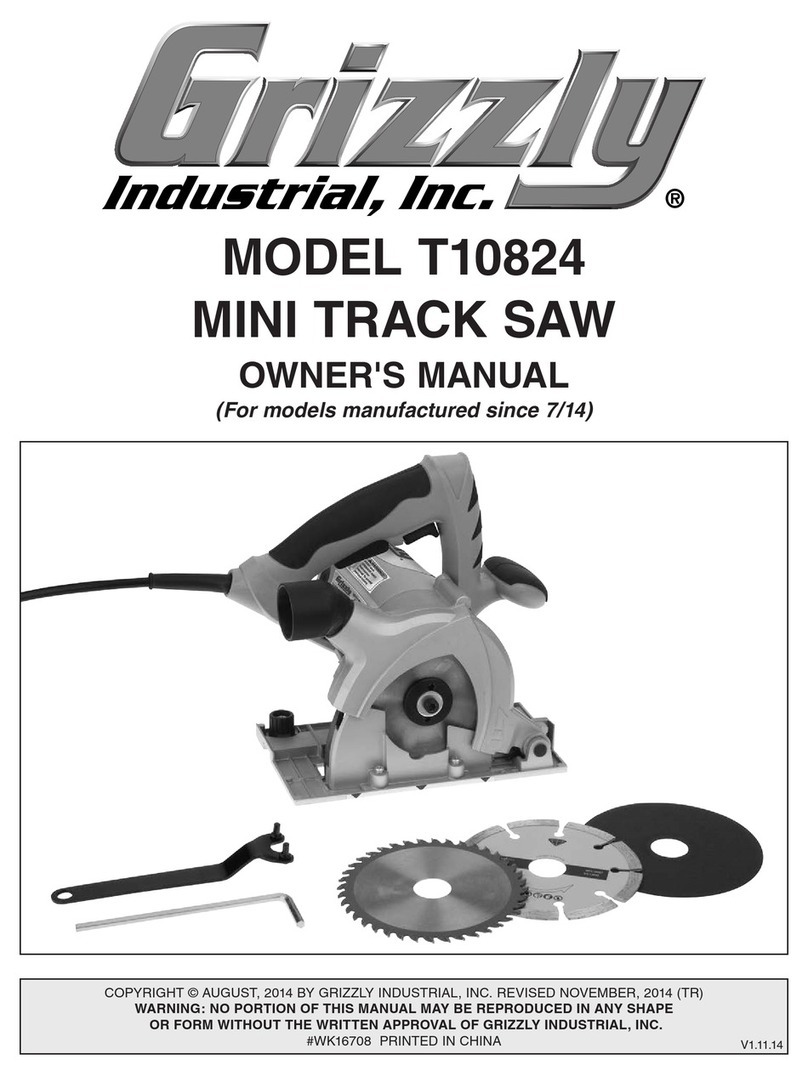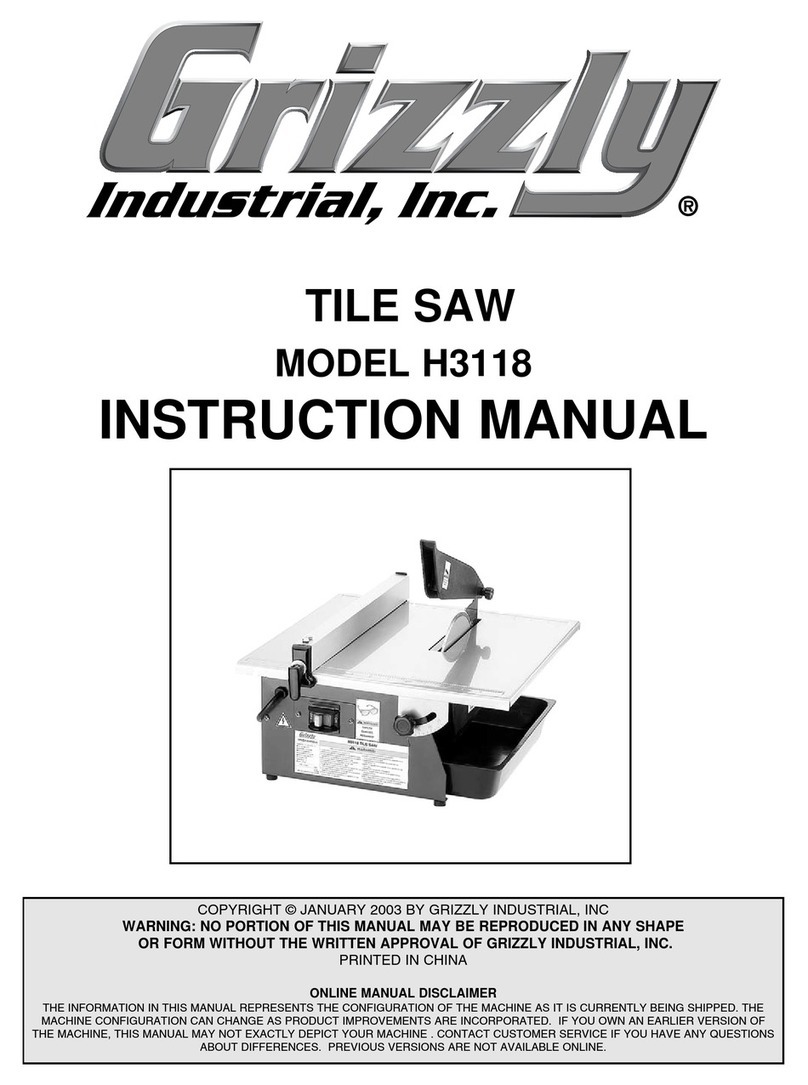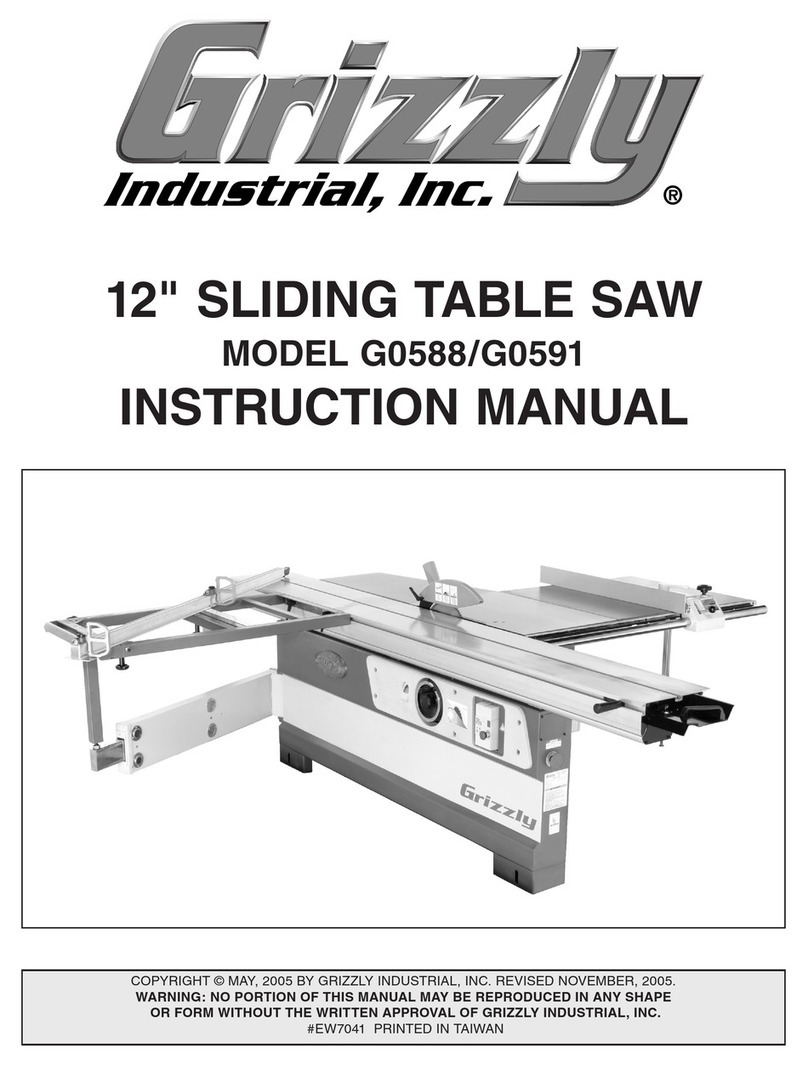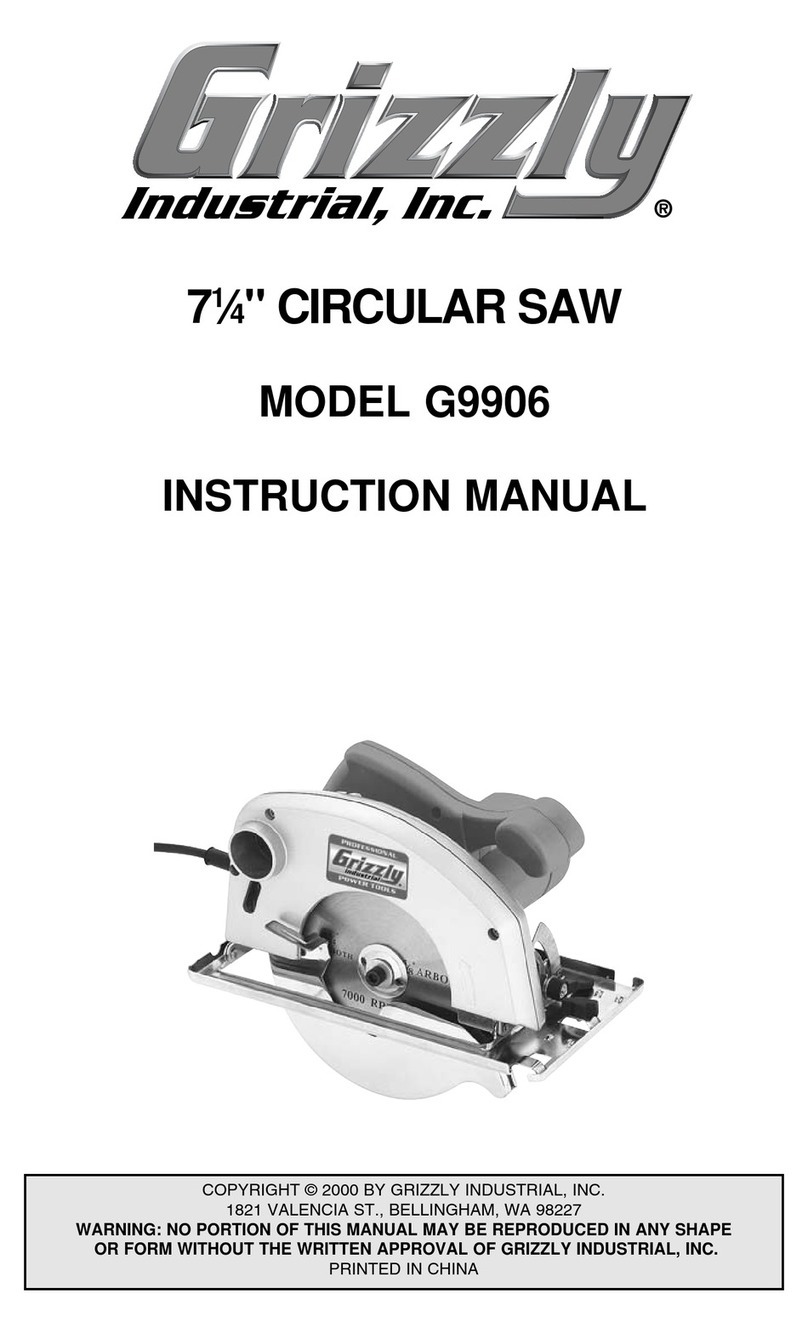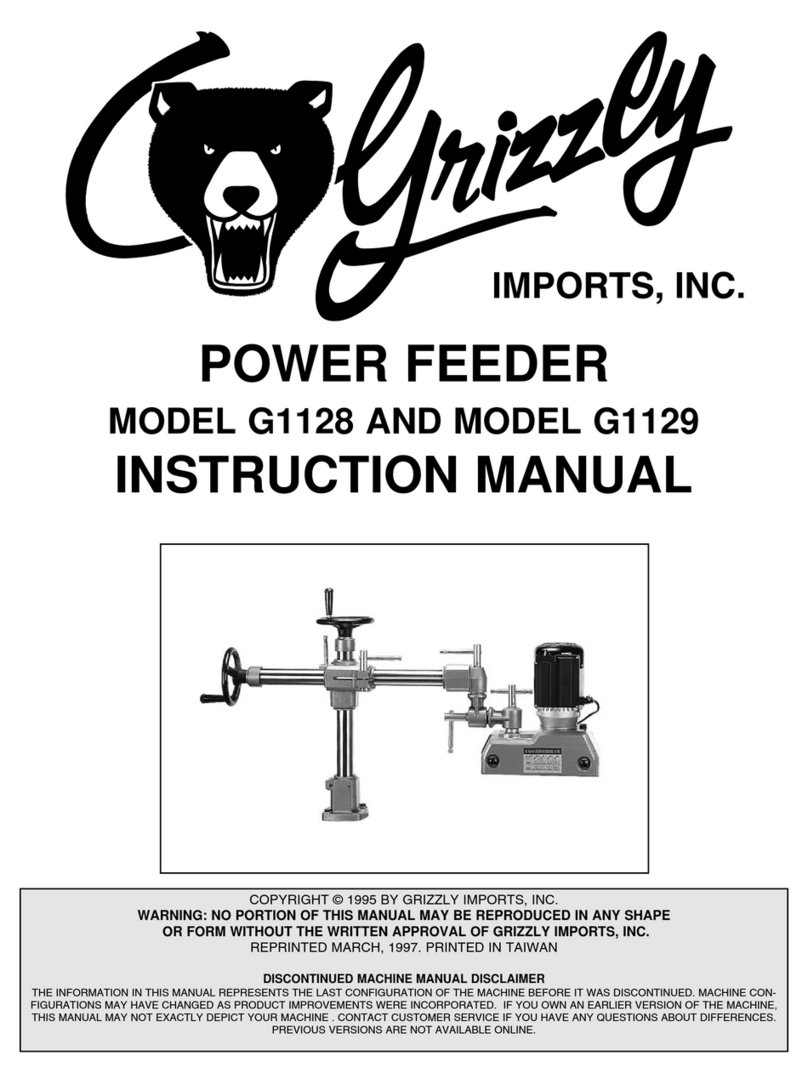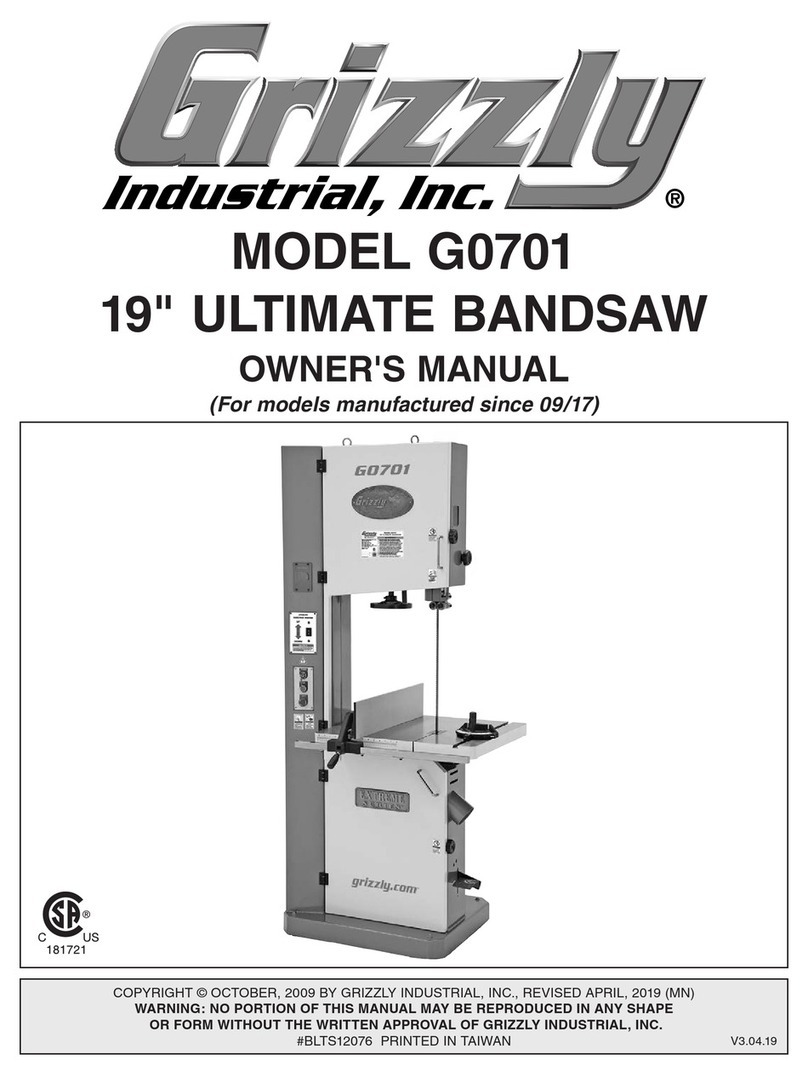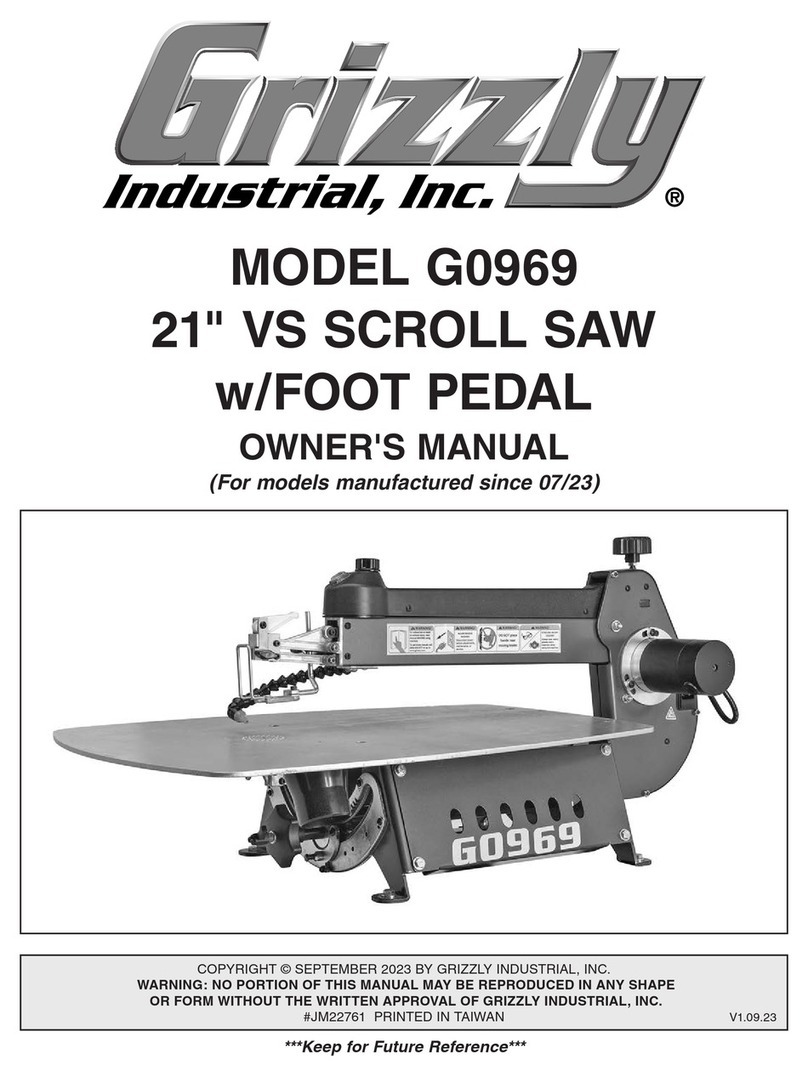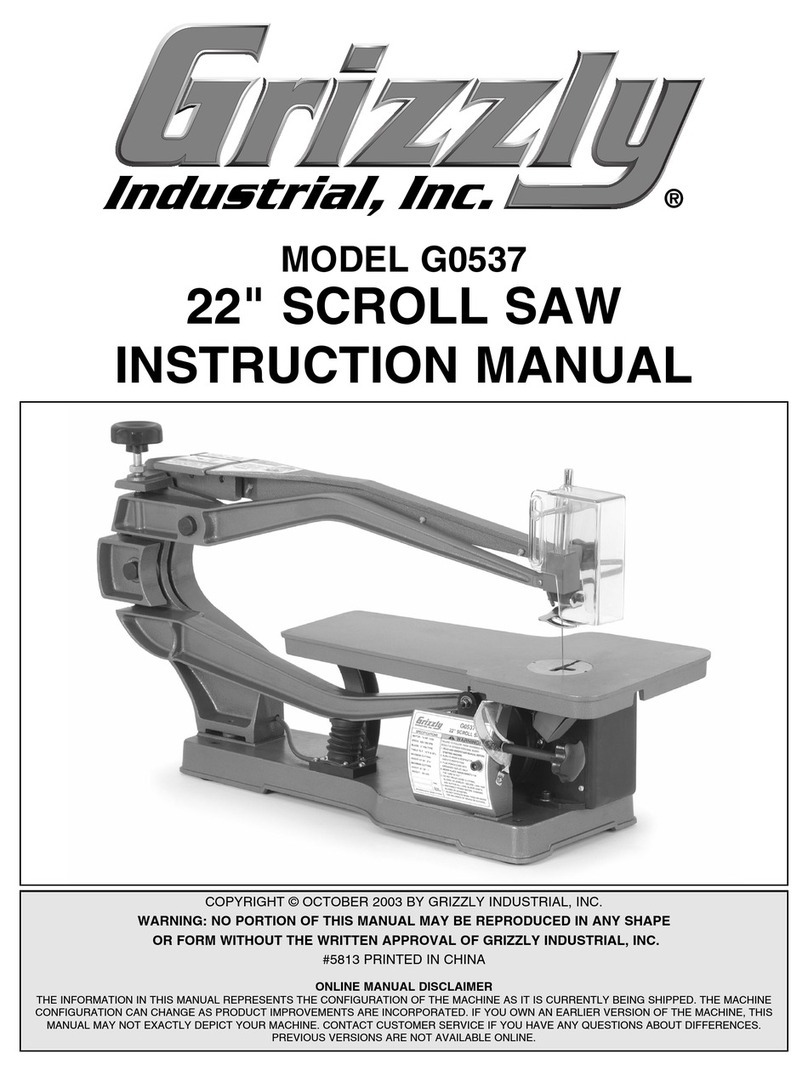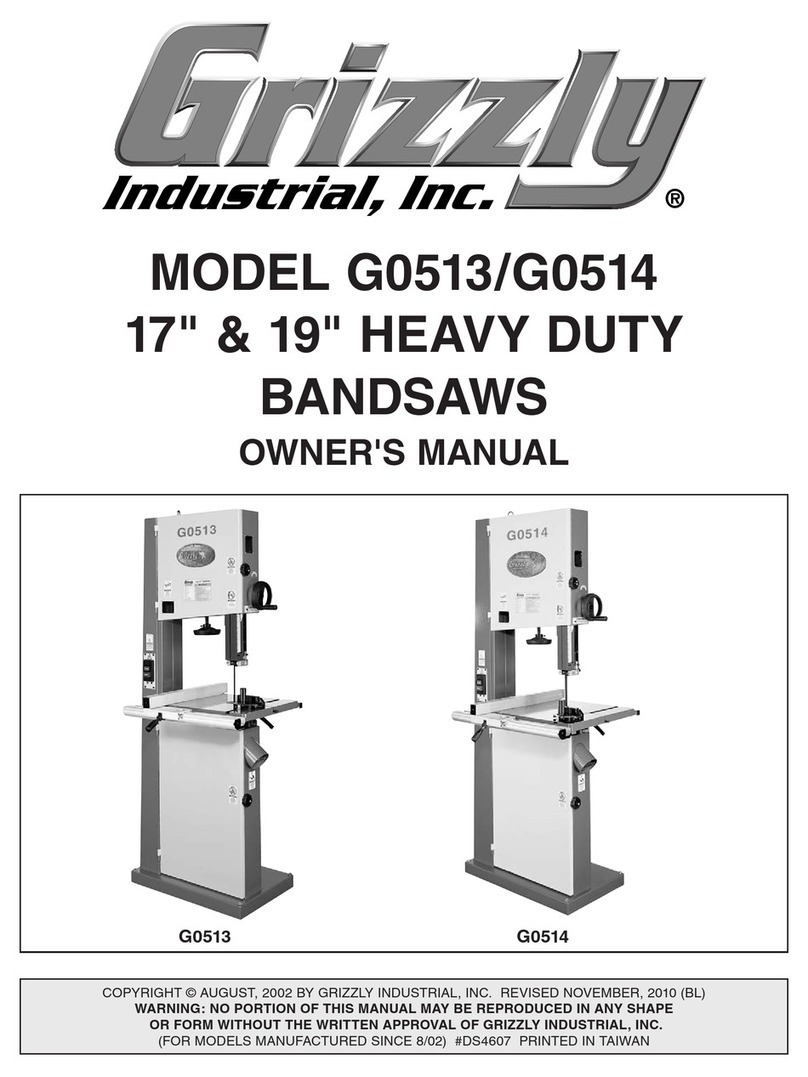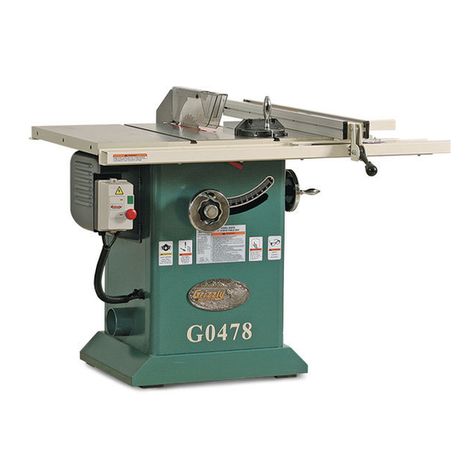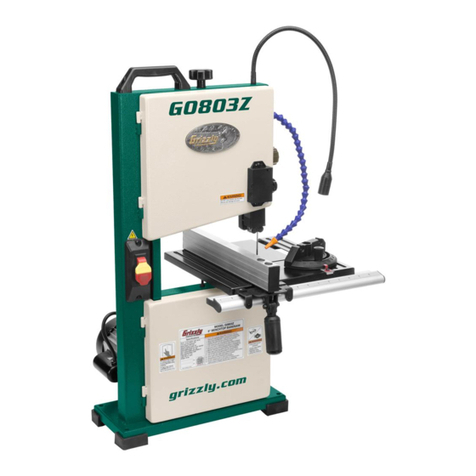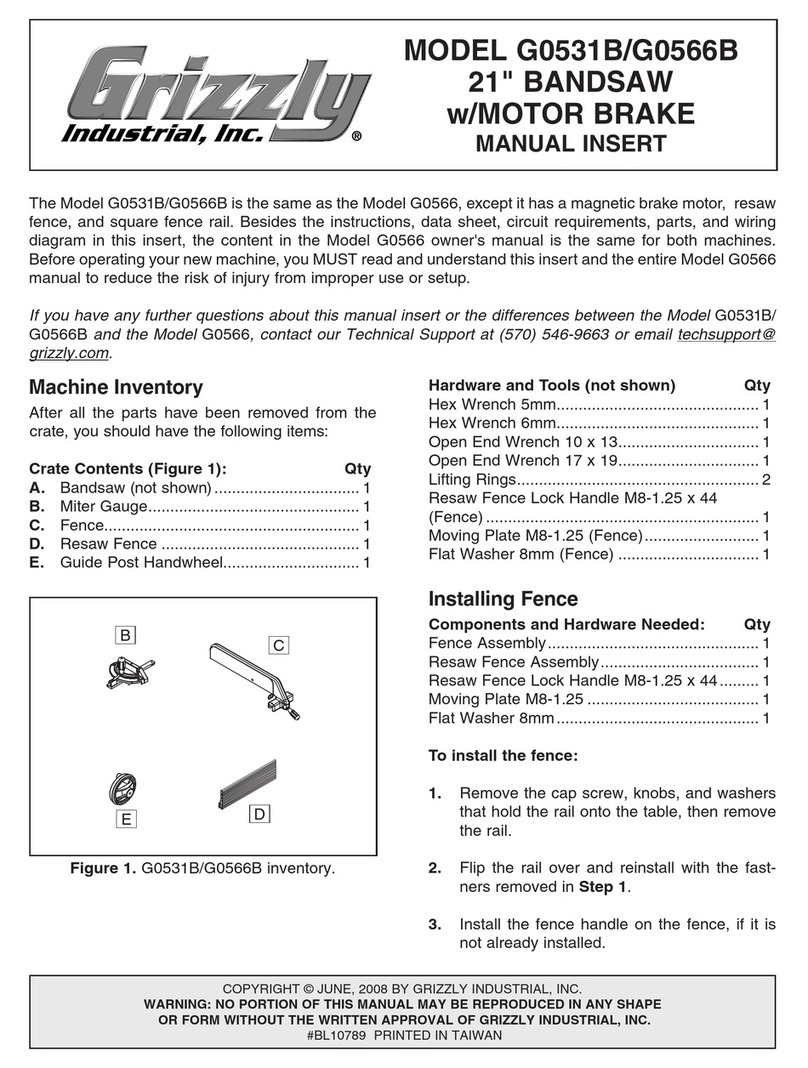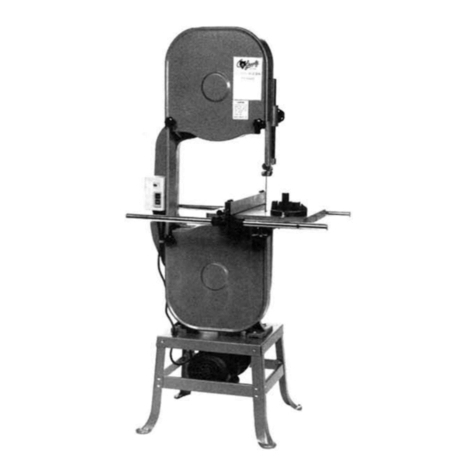-6- G5045 10'' Bench Top Table Saw
SECTION 3: GENERAL INFORMATION
We are proud to offer the Grizzly Model G5045
Bench Top Table Saw. The Model G5045 is part
of the growing Grizzly family of fine woodworking
machinery. When used according to the guide-
lines set forth in this manual, you can expect
years of trouble-free, enjoyable operation and
proof of Grizzly’s commitment to customer satis-
faction.
The Model G5045 Table Saw is intended for
home and professional jobsite use. This saw fea-
tures a 5,000 R.P.M., 1 H.P. single-phase motor,
toggle safety switch, and a large 343⁄8" x 16" table
top. An adjustable fence and miter gauge are
included.
This table saw can be bench mounted or used
with the heavy-duty stand included. The package
also includes a 10" combination blade and a 25⁄16"
dust collection port.
All running parts utilize shielded ball bearings,
which require no lubrication for the life of the
bearings. Grizzly offers a number of helpful
accessories for the Model G5045, including
additional 10" saw blades and a mobile base.
We are also pleased to provide this manual with
the Model G5045 Table Saw. It was written to
guide you through assembly, review safety con-
siderations, and cover general operating proce-
dures. It represents our effort to produce the best
documentation possible. If you have any com-
ments regarding this manual, please write to us
at the address below:
Grizzly Industrial, Inc.
C/O Technical Documentation
P.O. Box 2069
Bellingham, WA 98227-2069
Most importantly, we stand behind our machines.
If you have any service questions or parts
requests, please call or write us at the location
listed below.
Grizzly Industrial, Inc.
1203 Lycoming Mall Circle
Muncy, PA 17756
Phone:(570) 546-9663
Fax:(800) 438-5901
Web Site: http://www.grizzly.com
The specifications, drawings, and photographs
illustrated in this manual represent the Model
G5045 as supplied when the manual was pre-
pared. However, owing to Grizzly’s policy of con-
tinuous improvement, changes may be made at
any time with no obligation on the part of Grizzly.
Whenever possible, though, we send manual
updates to all owners of a particular tool or
machine. Should you receive one, we urge you to
insert the new information with the old and keep
it for reference.
To operate this, or any power tool, safely
and efficiently, it is essential to become as
familiar with its characteristics as possible.
The time you invest before you begin to use
your Model G5045 will be time well spent.
DO NOT operate this machine until you are
completely familiar with the contents of this
manual. Make sure you read and under-
stand all of the safety procedures. If you do
not understand something, DO NOT operate
the machine.
Commentary




